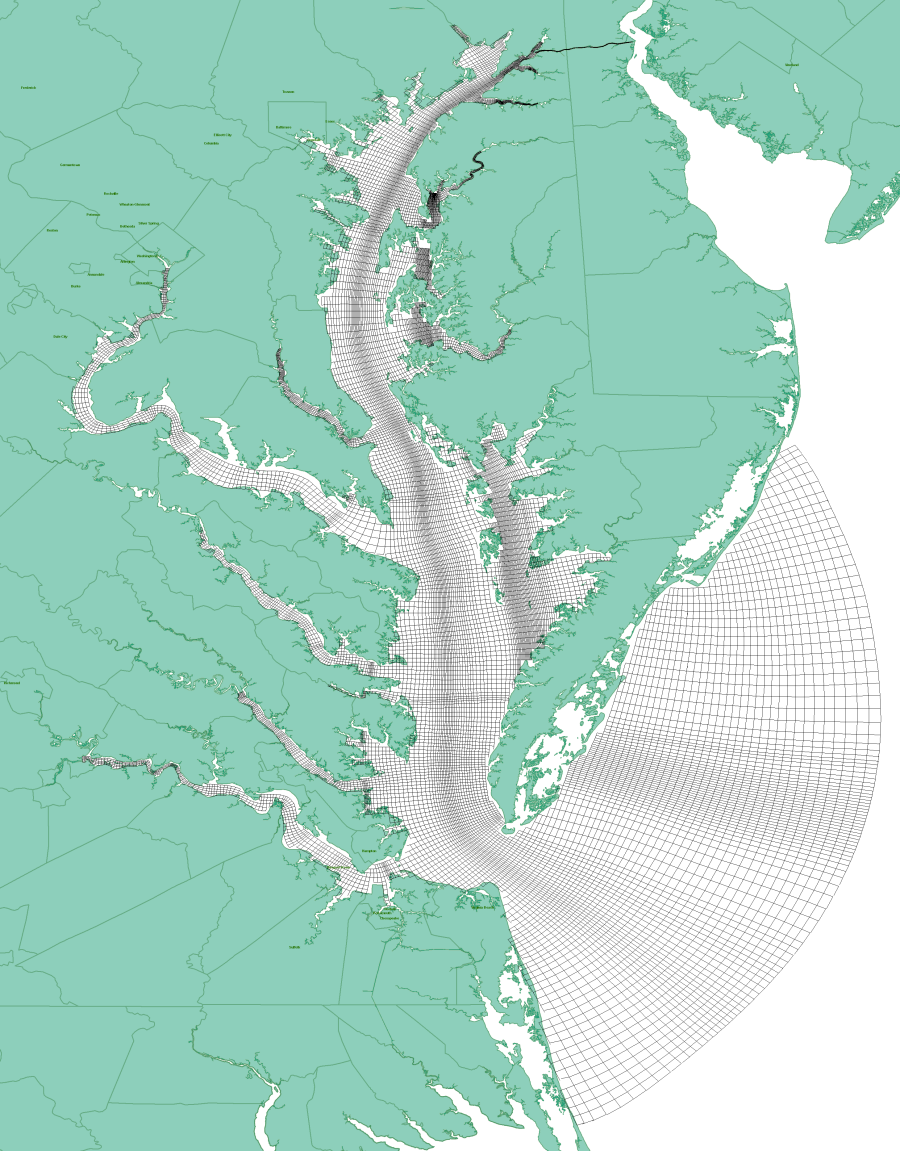The Chesapeake Bay Operational Forecast System (CBOFS)
Oceanographic nowcasts and forecast guidance are scientific predictions about the present and future states of a water body (generally including water levels, currents, water temperature and salinity). These predictions rely on either observed data or forecasts from large-scale numerical models. A nowcast incorporates recent (and often near real-time) observed meteorological, oceanographic, and/or river flow rate data and/or analyzed (e.g. gridded) meteorological and oceanographic products. A nowcast covers the period of time from the recent past (e.g., the past few days) to the present, and it can make predictions for locations where observational data are not available. Forecast guidance incorporates meteorological, oceanographic, and/or river flow rate forecasts and makes predictions about the future states of a water body. A forecast is usually initiated by the state of a nowcast.
The wind data used to run CBOFS are based on the National Weather Service (NWS)/Real Time Mesoscale Analysis (RTMA) winds (for the nowcast) and an interpolation of the NWS North American Mesoscale (NAM)-12 atmospheric forecast model data (for the forecast). The NWS Global Forecasting System winds serve as backup winds for both the nowcast and forecast runs.
Additionally, CBOFS relies on Extratropical Storm Surge forecasts, CO-OPS' real-time water level, temperature and salinity observations, USGS river data, and the Global Real-Time Ocean Forecast System.
The new CBOFS grid has 332 x 291 points in the horizontal. The finest grid resolutions in the x- and y- directions are 34m and 29m, respectively, and the coarsest resolutions are 4895m and 3380m, respectively. The vertical grid follows the terrain and consists of 20 model levels. The CBOFS model domain was designed to include the whole of the Chesapeake Bay and a piece of the shelf to allow a realistic interaction between the shelf and the entrance to the Bay. The CBOFS grid and spatial extent is indicated above. The bathymetry of the Chesapeake Bay is indicated below. Note that the greatest resolution of the CBOFS grid corresponds with the major channels of the bay.
CBOFS runs on NOAA's High Performance Computers (HPC) in a new Coastal Ocean Modeling Framework (COMF) developed by CO-OPS. As a result, CBOFS has direct access to NWS operational meteorological products that it needs to run reliably. Nowcast and forecast guidance cycles are run 4 times a day (every 6 hours).
CBOFS output is in NetCDF format. An archive of CBOFS NetCDF nowcast and forecast files can be accessed from CO-OPS THREDDS server.
All CO-OPS official real-time products, including nowcast and forecast guidance from CBOFS are monitored by the CO-OPS's Continuous Operational Real-Time Monitoring System (CORMS). CORMS provides 24 hour per day, 7 days per week monitoring and quality control of sensors and data in order to ensure the availability, accuracy, and quality of tide, water level, current, and other marine environmental information. CORMS is intended to identify invalid and erroneous data and information before application of the data by real-time and near real-time users.

